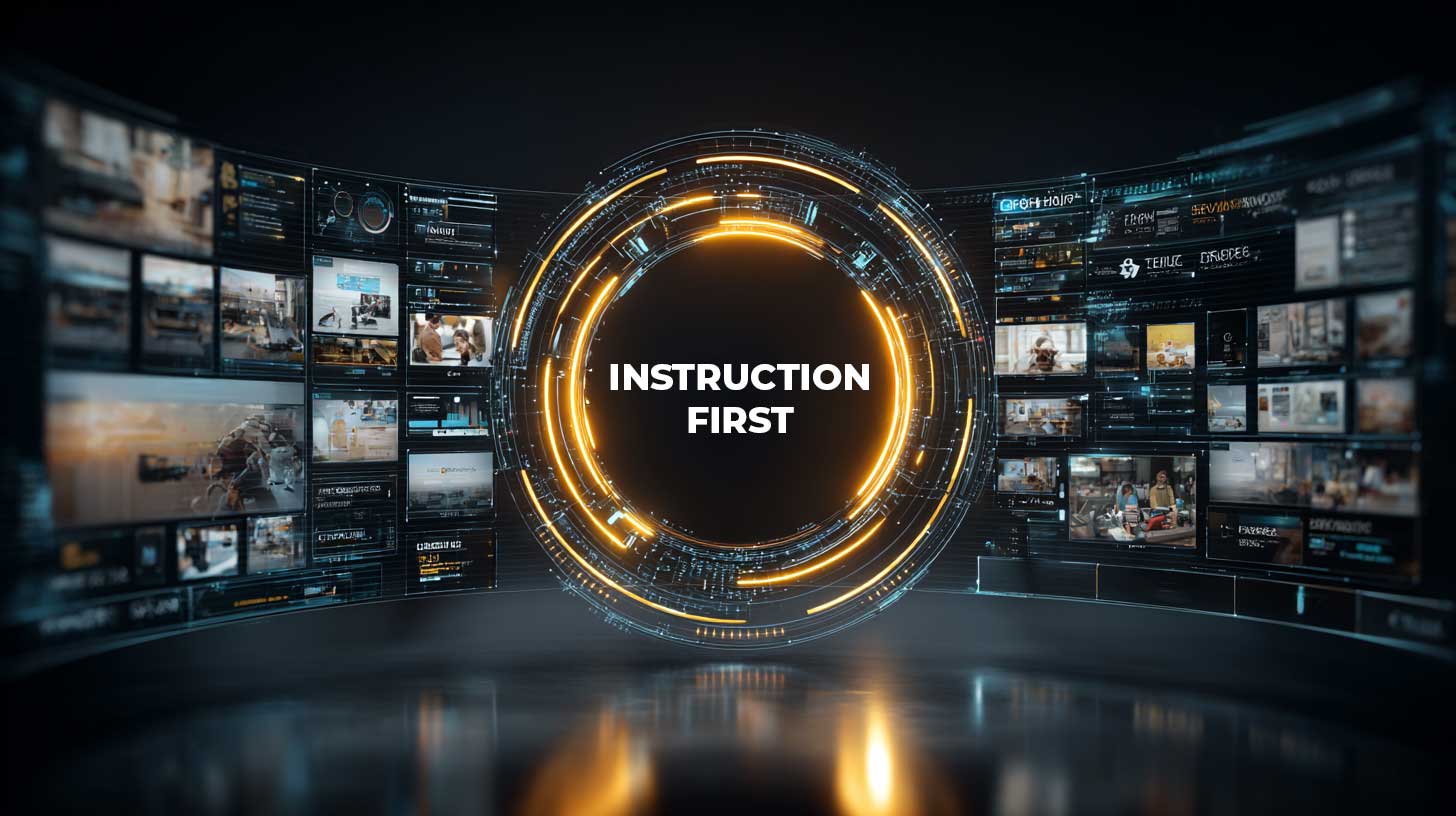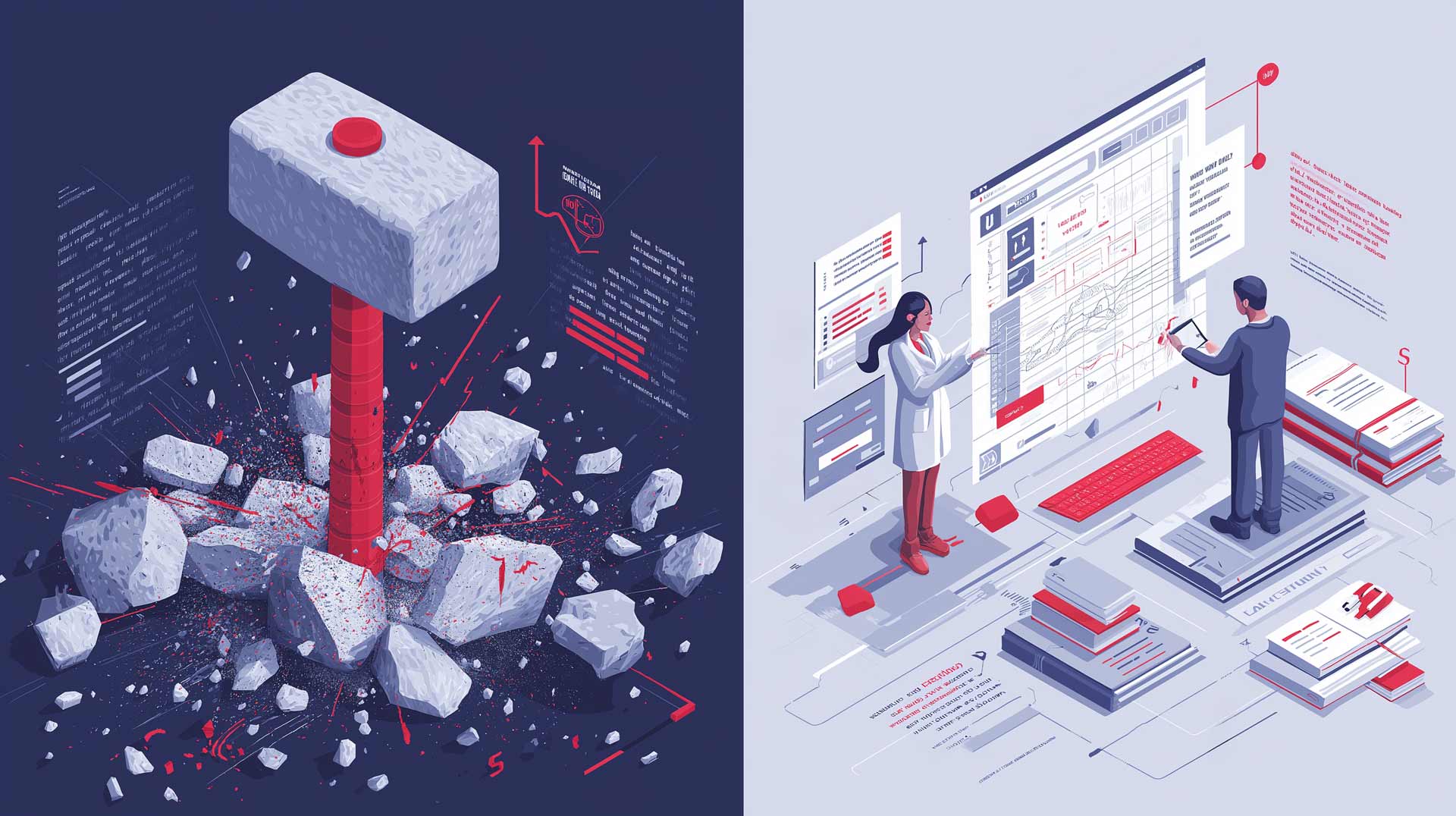5 min read
Instruction First, Tech Second: Smarter L&D Delivery Decisions
Cindy Foster : Nov 17, 2025 8:29:59 AM

For years, L&D leaders have invested heavily in technology hoping to prove measurable ROI. As we explored in EdTech ROI: The Missing Link is Instructional Design, most organizations still report wasted investments and underused platforms. The issue is not the tools themselves, but the lack of a design-first approach. In Driving ROI in L&D Technology with the InQuire Engagement Framework™, we showed how engagement drives outcomes when emotional, intellectual, and environmental factors are built into design.
This blog extends the conversation by focusing on L&D delivery decisions. ROI is either secured or lost when formats are chosen. Defaulting to what’s familiar can drain budgets and weakens results. Aligning delivery formats to objectives first, technology second, helps leaders close the ROI gap.
Key Takeaways
- Avoid defaulting to familiar formats — relying only on existing tools can drain budgets and reduce engagement
- Match delivery to objectives — knowledge, skills, behavior, and attitude each require a distinct approach
- Choose blended learning design for hybrid learning — combining formats creates the strongest outcomes for today’s workforce
- Use the InSync Design Navigator™ to make confident choices — align goals, assessments, collaboration, and delivery into defensible, ROI-focused strategies
Why L&D ROI Still Falls Short
Executives continue to question the value of L&D investments. Billions are spent each year on platforms, apps, and tools, but the expected impact often fails to appear.
According to Josh Bersin’s analysis in Learning Technologies, only 19% of L&D leaders believe their technology is optimized for learner experience.
The problem is the sequence of decision-making. Too often, delivery formats are chosen because they are licensed, available, or familiar. They are not chosen because they support the instructional goal. This “tech-first” approach creates mismatches between objectives and methods and, as a result, both ROI and engagement are left on the table.
The "Science of Designing for the Virtual Classroom" reinforces this point: evidence-based instructional design decisions, grounded in how people actually learn in virtual classrooms, create the conditions for engagement and measurable outcomes. Research-backed design—not technology alone—drives success.
Similarly, "Engagement in Virtual, Hybrid, and Blended Learning" highlights that engagement strategies must be intentionally built into delivery methods. It explains how emotional, intellectual, and environmental engagement extend across formats. Blended learning works best when engagement is a design standard, not an afterthought.
Together, these resources provide a research foundation for making smarter instructional design choices. They demonstrate that effective virtual classroom delivery relies on evidence-based methods, not trends or assumptions. This ensures that formats support both engagement and measurable performance.
The Cost of Defaulting to Familiar Formats
When delivery formats drive design, objectives suffer. A compliance program delivered in a collaboration tool misses the point. A leadership development course reduced to a self-paced module falls flat.
As Driving ROI in L&D Technology with the InQuire Engagement Framework stressed, engagement is not automatic, it must be designed. Choosing the wrong delivery format undermines emotional safety, intellectual challenge, and environmental interaction. Leaders who default to the LMS or the tool already in place risk disengagement and wasted investment.
Four Types of Objectives, Four Different Needs
Instruction first, tech second means delivery decisions must start with the instructional goal and performance objective. Every program falls into one of four categories:
- Knowledge — recall or comprehension
- Best served by asynchronous delivery (eLearning, microlearning, self-paced resources) reinforced with quick assessments
- Skills — performance-based outcomes
- Require synchronous practice, feedback, and coaching through the virtual classroom
- Behavior — interpersonal or managerial capabilities
- Need collaborative environments where learners can role-play, solve problems, and get feedback from peers
- Attitude — mindset shifts such as DEI awareness
- Require authentic dialogue, reflection, and safe spaces for emotional engagement
If the objective can’t be measured, it can’t be proven. And if it can’t be proven, ROI will remain elusive. As a guiding principle: if it’s not worth testing, it’s not worth teaching.
Yes, I know this sounds glib. What it really means is that hybrid learners don’t have the patience for what they perceive as “nice to know” information. They want to understand whether they will be assessed and if the content is truly applicable back on the job. Don’t teach the history of insurance if the job is to process a claim. Instead, make this type of background content readily available for individuals who want to dig deeper on their own. Below are some example scenarios combatting this issue:
**Scenario 1: A global compliance rollout with thousands of employees often defaults to a webinar. But the true objective is knowledge retention and application. A better design blends eLearning modules with a short live Q&A session and follow-up job aids. The result: consistent knowledge transfer, measurable through quizzes, at scale.
**Scenario 2: Leadership feedback skills require practice and safe spaces. A self-paced module alone will not change behavior. Instead, a virtual classroom with role-play, breakout discussions, and coaching ensures that managers apply the skill authentically.
**Scenario 3: A DEI awareness initiative is more than presenting concepts. It demands emotional safety, intellectual challenge, and collaborative dialogue. The most effective format blends pre-work reflection, live discussions, and peer learning circles.
Our "Blended Learning Design in the Hybrid Environment" blog underscores this point: delivery decisions must reflect learner needs and assessment strategies, not what’s convenient to deliver.
Why “Blended” Is Usually Best for Hybrid Workforces
Rarely does a single delivery format meet all objectives. For hybrid learning, blended learning design is the most reliable approach.
Research shows that blended approaches outperform both in-person and online-only programs. Combining asynchronous knowledge transfer with live practice, collaboration, and reinforcement creates balance: scalable reach plus meaningful engagement.
As we wrote in "Blended Learning That Works at Scale," effective blends consider both technology and learner needs. Blended design is about sequencing formats in ways that maximize learner performance and business results.
In practice, a compliance program might pair self-paced modules with live Q&A. A leadership course could combine the virtual classroom, peer coaching, and job aids. The right blend protects outcomes while managing budget, time, and access constraints.
That’s why all the workshops in our Hybrid Leadership Accelerator Series include self-directed work (such as eLearning, videos, reading, and quizzes), live virtual classes (with discussions and collaborative activities in breakouts), a Final Project that includes self-reflection, and a Personal Development Journal to support learning transfer on-the-job.
Defining Learning Authenticity
Learning authenticity means presenting content in a way that mirrors how skills will be used on the job. Modern workplace learning must be relatable and accessible. Before deciding on technology, consider where, when, and why participants need to learn. Establishing these factors builds the foundation for an authentic blended learning experience.
Blended learning can happen in four places: in the classroom, on a desktop, on a mobile device, or directly on the job. Each location has strengths depending on the objectives.
Timing also matters: formal, informal, collaborative, just-in-time, or on-demand. For example, teaching customer service reps in a virtual classroom reflects the environment where they will apply skills. Mobile delivery may be more authentic for field sales representatives or manufacturing line workers.
Whenever you design learning, ask: does the delivery mirror how and where learners will perform the task? Authentic delivery makes training more relevant, engaging, and lasting.
Using the InSync Design Navigator™ to Make Confident Delivery Decisions
Smarter L&D delivery decisions follow a four-step process:
- Identify the instructional goal and performance objectives — define what learners must achieve and tie it to business outcomes
- Determine assessment needs and techniques — align delivery to how success will be measured
- Decide if collaboration will improve outcomes — build interaction into the design when it strengthens learning
- Identify the authentic delivery format — select the method that best supports the objective, not just the tool that’s available
The InSync Design Navigator™ operationalizes this process. It provides structured, evidence-driven recommendations leaders can defend to executives. Instead of guessing or defaulting to licensed platforms, L&D teams can make confident, research-backed decisions that prove ROI.
For instructional designers looking to assess their own skills, explore our Essential Virtual & Hybrid Design Skills: Self-Assessment toolkit. This resource helps identify strengths and gaps in design expertise and provides a roadmap for building capability in blended and hybrid learning environments.
From Instruction to ROI: The Smarter Path Forward
The instruction first, tech second mindset changes the conversation. Delivery formats become tools in service of objectives, not the starting point. Engagement is designed, not assumed and ROI becomes measurable, not elusive.
With the Design Navigator™ and the InQuire Engagement Framework™, organizations finally have the roadmap to make smarter L&D delivery decisions and the confidence to prove their value at the executive table.
SEE THE InSync Design Navigator™ IN ACTION
- Join our upcoming session for a first look at the tool!
Design Smarter: Solving L&D’s Tech ROI Problem with the Design Navigator Prototype

Driving Learning ROI with the InQuire Engagement Framework™

EdTech ROI: The Missing Link Is Instructional Design
The ROI + Engagement Gap in L&D Technology
